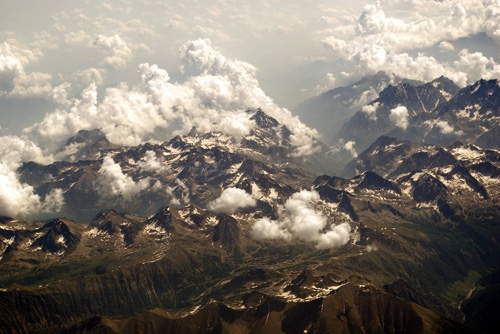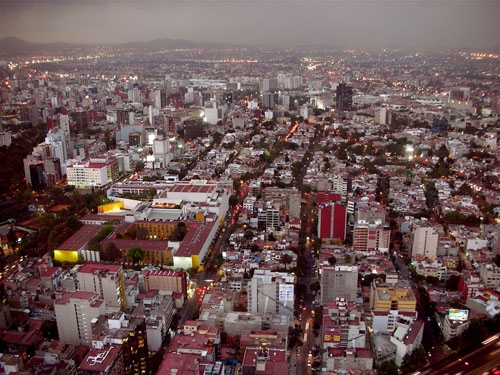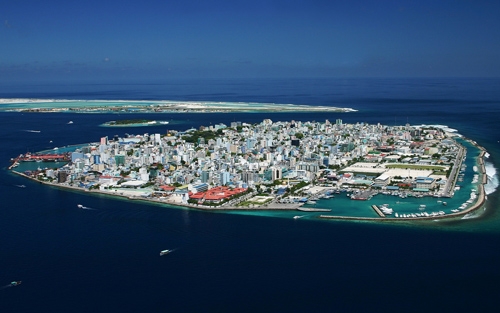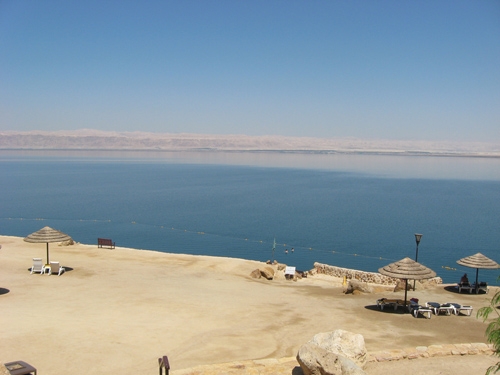Last chance to see
The Great Barrier Reef as a forest of bleached corals. The Alps as a row of brown, snowless peaks. Mexico City as a ghost town sinking into soft clay. These may seem as doomsday scenarios conjured by some Hollywood hotshot for the big screen but scientists claim that these possibilities are all too real.
Global warming or climate change is one of the reasons for their demise but other factors—poor urban planning, lack of foresight, and already existing weaknesses—also contribute to their slow but steady disappearance from the map.
If government intervention fails and the current world’s climate pattern doesn’t improve, these six places are likely to vanish within our children’s lifetime. See them before they become impossible to travel and end merely as spectacular scenes in photographs that tell of the old good days.
Great Barrier Reef
If global carbon dioxide emissions will not be reduced to at least 25 percent by 2020, Great Barrier Reef could be 95 percent gone in 40 years—as well as over 1,500 fish species and more than 360 types of hard coral. Low-lying Polynesian towns like Moorea would also be vulnerable to tsunamis and storms without the reef’s protective embrace.

The only structure made of living organisms visible from space, the Great Barrier Reef may be gone in 40 years. (Photo by Sarah Ackerman)
Australia’s scientists believe that green house gases, rising sea levels, and intensifying storms speed up the reef’s death for the past four centuries. To save its crown jewel, the country, one of the world’s biggest carbon dioxide emitters, pledged to cut its carbon footprint by five percent by 2020. Scientists, however, believe that this will not be enough because they estimate that the world, not just Australia, should curtail carbon dioxide by 90 percent in 2050 in order to save the Great Barrier Reef.
The Alps
The Alps may seem to be frozen in eternity but these glorious snow-capped mountains are also vulnerable to climate change. Among those at vanishing point are Switzerland’s Alpine Glaciers, which scientists believe would entirely melt within the century because of irregular precipitation and warming temperatures.

The snow that gives the Alps their glittering peaks will all melt within the century. (Photo by House of Sims)
The Alps’ melting snow would have an impact beyond their tourism value. Geologist Christian Bogdal says the toxic chemicals stuck on the glaciers today “would appear in our lakes in a few decades,” thereby polluting sources of water.
Mexico City
Its beginning didn’t start well: the conquistadors drained the lake which the Aztecs had previously built and sunk the foundations of a European-styled community into the empty basin. As Mexico City is now one of the busiest urban centers in the world, officials are forced to source water from the giant aquifers or water reservoirs underneath the city to service the needs of 22 million people. Because of this, Mexico City is gradually sinking by 19 inches per year. So far, the city has sunk for more than 30 feet.

Without other viable source of water apart from the aquifers beneath it, Mexico City could collapse into itself. (Photo by Enrique Dans)
The government has responded to the problem by exploiting alternative water sources, but since these options are very costly, 70 percent of the water is still drawn from the aquifers. No alternative water source has been proven as viable so it seems that the sinking of Mexico City can’t be helped.
Maldives
In Maldives, to say that the coral reefs are eroding means that the whole nation itself would disappear as it sits on 26 atolls or coral islands that are now being gradually swallowed by the Indian Ocean. The group of islands precariously sits only three feet above sea level. Any rise in the sea level, says the government to BBC, “could have a devastating effect on the people of the Maldives and their survival.”

The year 2022 spells doomsday for Maldives if the rise of sea level doesn’t stop. (Photo by Jim Trodel)
To prevent a looming 2022 disappearance from the map, the government has employed reduction in deforestation, “reseeding” techniques to aid in coral growth, as well as building a seawall to protect the islands from escalating sea levels. Nonetheless, despite these efforts, the government confesses that they can do nothing to stop climate change. “So we have to buy land elsewhere,” says Ibrahim Hussein Zaki, the presidential spokesperson. They are eyeing to establish a new Maldivesian nation in a country with a similar culture like India or Sri Lanka.
Dead Sea
It won’t be long before the Dead Sea lives up to its name. Dams, pipelines, and other constructions have blocked the Jordan River and many other tributaries from feeding water into the Dead Sea, causing it dry up at an alarming rate. Add to this the relentless use of the sea’s water for farming and domestic consumption, and the Dead Sea will be but a salty, dry bed by 2020. Even now, it has already lost over a third of its surface area. The level has dropped to over 25 meters and continues to fall for over a meter every year.

The Dead Sea may really end up dead by 2020 if people continue to drain water from it. (Photo by Tracy Hunter)
The government has already manually poured water into the Dead Sea and is now on the works of creating an artificial tributary to connect it to the Red Sea. These remedies, however, face strong opposition as species might be endangered if the Red Sea’s natural ecosystem is disturbed.
Venice
Venice, whose charm lies in its canals and beautiful buildings, is now experiencing the worst flooding in its history. From 30, the city experiences up to a hundred floods annually. In the coming years, it is said that it would suffer 250 floods a year due to the rising Adriatic Sea.

Venice could become a city under the sea if the $3 billion artificial sea walls fail. (Photo by degreezero2000)
To prevent Venice from being completely drowned within the century, Operation Rialto has been set up to gradually elevate the city’s landmarks. The Italian government has also launched one of the most ambitious plans to date: the $3-billion Project Moses, a series of mobile seawalls which adjust the rising and retreating of the tides. Saving a city, it seems, doesn’t come cheap.

The latest features
Summer Destination to Avoid: Gulf of Mexico
 EPA is failing to do their job monitoring the air and reporting factual data. The people need to be made aware that their lives and long term livelihood are at stake because of the air quality in Gulf of Mexico.
EPA is failing to do their job monitoring the air and reporting factual data. The people need to be made aware that their lives and long term livelihood are at stake because of the air quality in Gulf of Mexico.
How to Avoid Traveling Troubles
 Traveling to a certain destination might not become memorable if there are too many troubles along the way. Remember that even the best trips are usually not trouble-free. Follow these tips that help lessen the hassles.
Traveling to a certain destination might not become memorable if there are too many troubles along the way. Remember that even the best trips are usually not trouble-free. Follow these tips that help lessen the hassles.
Unique Toys from Japan
 Japan is known for its fascinating, and sometimes, eccentric culture. From anime, karaoke, to advanced technology, the Land of the Rising Sun always has something unique to offer.
Japan is known for its fascinating, and sometimes, eccentric culture. From anime, karaoke, to advanced technology, the Land of the Rising Sun always has something unique to offer.
Exploring California's Venice Beach
 Travelers who are after the sunny side of Southern California can visit the beautifully eccentric Venice Beach, also known as Arnold Schwarzenegger’s Muscle Beach, home to Hollywood royalties Julia Roberts, Kate Beckinsale, and Nicolas Cage.
Travelers who are after the sunny side of Southern California can visit the beautifully eccentric Venice Beach, also known as Arnold Schwarzenegger’s Muscle Beach, home to Hollywood royalties Julia Roberts, Kate Beckinsale, and Nicolas Cage.
When Mother Nature wields terror
 Some places are made dangerous by the conflicts brought about by humans. But in these towns and cities—most of them heavily populated—it is Mother Nature which is always on the verge of wrath, wrecking havoc of unimaginable proportions.
Some places are made dangerous by the conflicts brought about by humans. But in these towns and cities—most of them heavily populated—it is Mother Nature which is always on the verge of wrath, wrecking havoc of unimaginable proportions.
Slaughter of dolphins comes to cinemas
 Ric O’Barry once captured and trained dolphins in amusement parks and made the character Flipper world famous. Now, he is the animals’ unlikely champion, exposing the savage ways they are hunted in a small town in Japan. This time, he wants the dolphins swim free.
Ric O’Barry once captured and trained dolphins in amusement parks and made the character Flipper world famous. Now, he is the animals’ unlikely champion, exposing the savage ways they are hunted in a small town in Japan. This time, he wants the dolphins swim free.
The new Bollywood fever
 As one of the major film production centers in the world, Bollywood churns out about 1,0000 movies, most of which cater to India’s masses. They precariously enact their lives through the characters, escaping to a world where everything in the end gets resolved in song and dance.
As one of the major film production centers in the world, Bollywood churns out about 1,0000 movies, most of which cater to India’s masses. They precariously enact their lives through the characters, escaping to a world where everything in the end gets resolved in song and dance.
Finding Haiti Amid the Rubbles
 Weeks after the earthquake that rocked Haiti, rescuers are still finding survivors amid the rubbles. It seems that the hardy spirit of Haitians is still alive, inherited from their ancestors who led the only successful slave revolt in history.
Weeks after the earthquake that rocked Haiti, rescuers are still finding survivors amid the rubbles. It seems that the hardy spirit of Haitians is still alive, inherited from their ancestors who led the only successful slave revolt in history.


